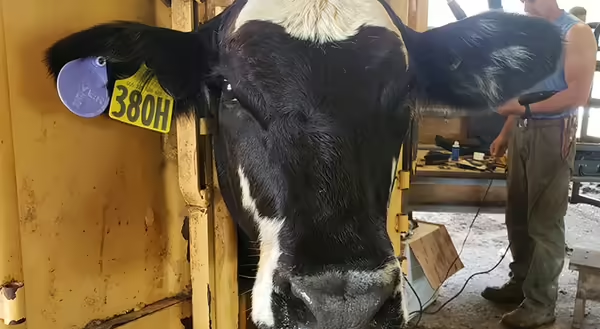
With breeding season approaching, let’s look at some areas of focus to that could be robbing from conception rates. Some factors that I think disserve discussion are cow condition, cow requirements, lush pastures, timing of vaccinations, lack of heterosis, stress, and bull fertility.
First and foremost, ensure bull fertility. Semen checking bulls and having a breeding soundness exam performed on working sires is a must. Turning out bulls that have not been annually evaluated for fertility is poor management.
On the cow side of the equation… Are cows in good body condition score (BCS)? Numerous research studies show that cows in good body condition scores (BCS 5 or 6) breed earlier in the season and at a higher percentage than cows in thin condition (BCS 4 or lower).
Another lurking factor in poor conception rates could be increased cow nutrient requirements. Cows that weigh more and cows that milk more have higher nutrient requirements. If feed resources do not provide enough nutrients, mainly energy, then cows could be conceiving at lower percentages or delaying conception until later in the season. Selecting genetics that fit your environment is important to optimizing reproduction.
Monitoring nutrition and plane of gain after breeding is worthwhile. In many cases, cows/heifers are bred on lush spring pasture. This grass is wet (20-25% DM) and can fail to meet the DM requirements. This can result in a moderate weight loss that is hard to detect and can be silently lowering your conception rates. I would suggest transitioning cows to lush forage prior to breeding or offering a dry, high-energy supplement (3-4lbs/hd/d) until grass hardens. Cattle losing weight do not breed-up well.
The timing and type of vaccination may very well influence conception rates. Research has shown that using inactivated vaccines (killed vaccines) instead of modified-live vaccines helps improve A.I. conception rates. Move pre-breeding vaccines and the last booster round at least 30 days prior to breeding.
For the commercial producer, a lack in heterosis may be contributing to breeding season problems. Crossbreeding research shows an increase in 1st service conception and calves weaned per cow. Choose quality genetics from different breeds, not just different breeds.
Stress will hurt conception and pregnancy rates. Between day 5 and day 45 post-breeding corresponds with embryo implantation. Stressors in this time frame can cause the embryo to fail to implant and the pregnancy lost. Hauling, heat, handling, and other stressors should be avoided or managed, especially during this sensitive time.
Reproduction is susceptible to many outside factors. As cattlemen, we must be aware of these challenges and manage them accordingly. I challenge you to evaluate your own herd and investigate if any of these factors may be stealing from your breeding season.
*Originally published in Progressive Cattle